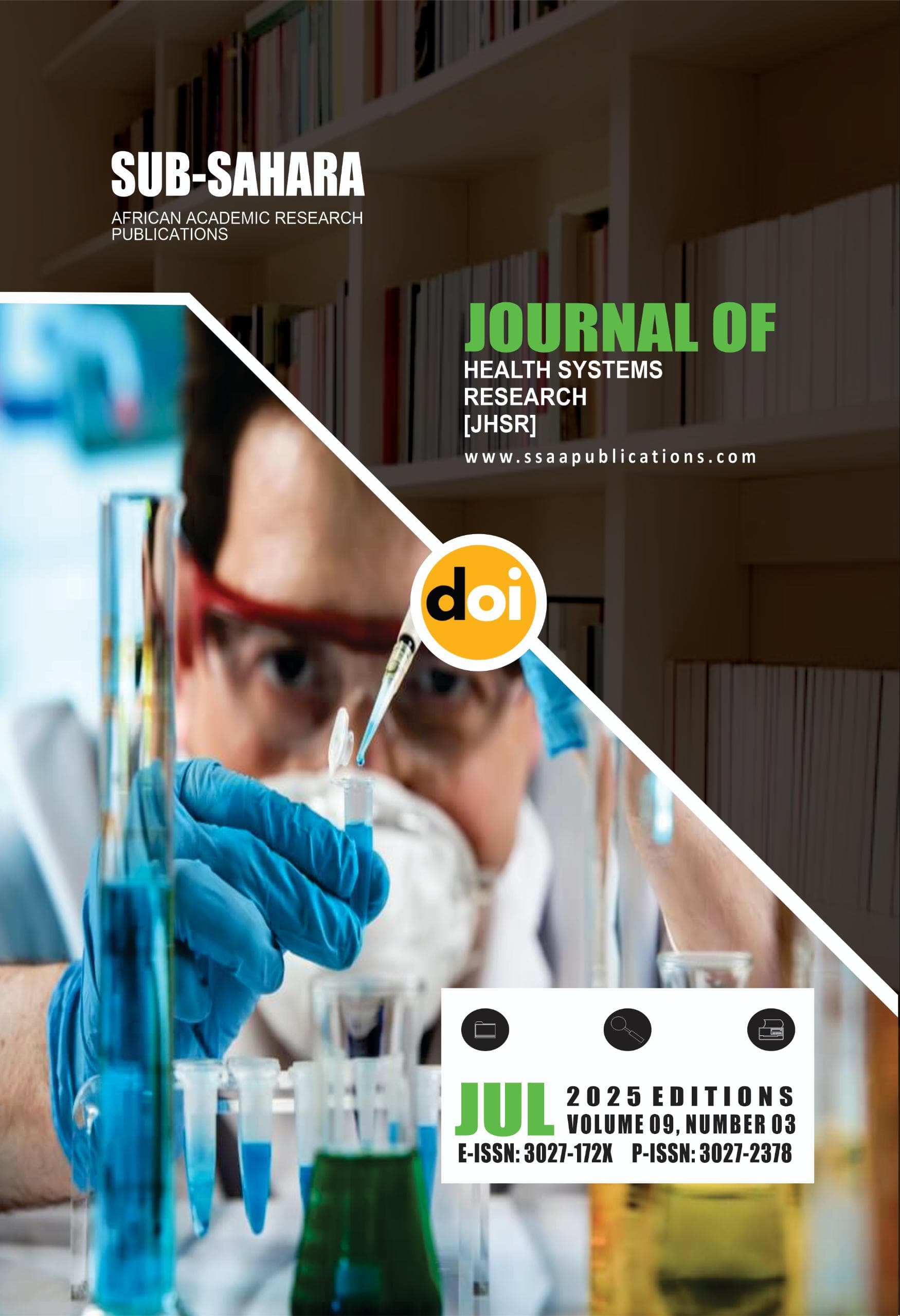MOLECULAR DETECTION OF RESISTANCE IN ESCHERICHIA COLI ISOLATED IN DISEASED CHICKENS FROM COMMERCIAL FARMS IN NORTHWEST, NIGERIA
DOI:
https://doi.org/10.70382/sjhsr.v9i3.036Keywords:
Molecular, Resistance, Escherichia coli, Diseased, ChickensAbstract
This study was carried out to investigate the phenotypic resistance and detect the genotypic genes to tetracycline, chloramphenicol and gentamycin that confer resistance to those phenotypes in Disease chickens from commercial farms in Sokoto and Kebbi States. Following culture, isolation, biochemical test and molecular confirmation. Only one hundred and one (22.4%) samples were confirmed E. coli infections. Antimicrobial sensitivity testing to ten (10) antibiotics has shown that out of 101 (22.4%) isolates, higher antimicrobial resistance rates of 92 (91.1%), 79(78.2%) and 70 (69.3%), were recorded for tetracycline, sulphonamides, and gentamycin respectively. Low antimicrobial resistance rates of 17 (16.8%) and 4 (4.0%) were recorded for cefotaxime and ceftazidime respectively. Fourteen (14) different multi-drugs resistance (MDR) profiles were observed from E.coli isolates in the study area. Forty-five (45) of the isolates were multidrug-resistance. While one isolate is pan drug resistance. Molecular detection of resistance genes (sul1 and sul2) to sulphonamides revealed that sul2 81(80.2%) is the most predominant sulphonamides resistant genes as compared to sul1 47(46.6%) respectively. Genotypic resistance genes (tet(A) and tet(B)) detection to tetracycline were expressed higher in tet(A) with 88(86.1%) and low resistance genes to tetracycline was recorded in tet(B) with 29(27.7) respectively. Molecular detection of resistance genes (catA1 and catA2) to chloramphenicol, revealed a higher percentage of resistance genes to catA1 with 68(67.3%) while catA2 has the lowest resistance genes with 37(36.6). Detection of Resistance Genes to Sulphonamides, Tetracycline, and Chloramphenicol to all confirmed isolates has showed fair agreement (0.36) between phenotypic resistance to sulphonamides and detection of sul1, and sul2 with statistical significance (p= 0.001). Perfect agreement (0.85) was observed between phenotypic resistance to chloramphenicol and detection of catA1 and catA2 with statistical significance (p = 0.001) while substantial agreement (0.08) was observed between phenotypic resistances to tetracycline and detection of tetA1 and tetA2 with statistical no significance (p= 0.38). Regular disinfection and restriction of farm access should be prioritized. Continuous monitoring and surveillance of antimicrobial resistance patterns in poultry farms should be conducted to track emerging resistant strains and guide appropriate interventions.
Downloads
Downloads
Published
Issue
Section
License
Copyright (c) 2025 ABUBAKAR S. M. ABBA, YA ADAMU, SIRAJO GARBA, NAFIU LAWAL, ABDURRAHMAN HASSAN JIBRIL (Author)

This work is licensed under a Creative Commons Attribution 4.0 International License.







